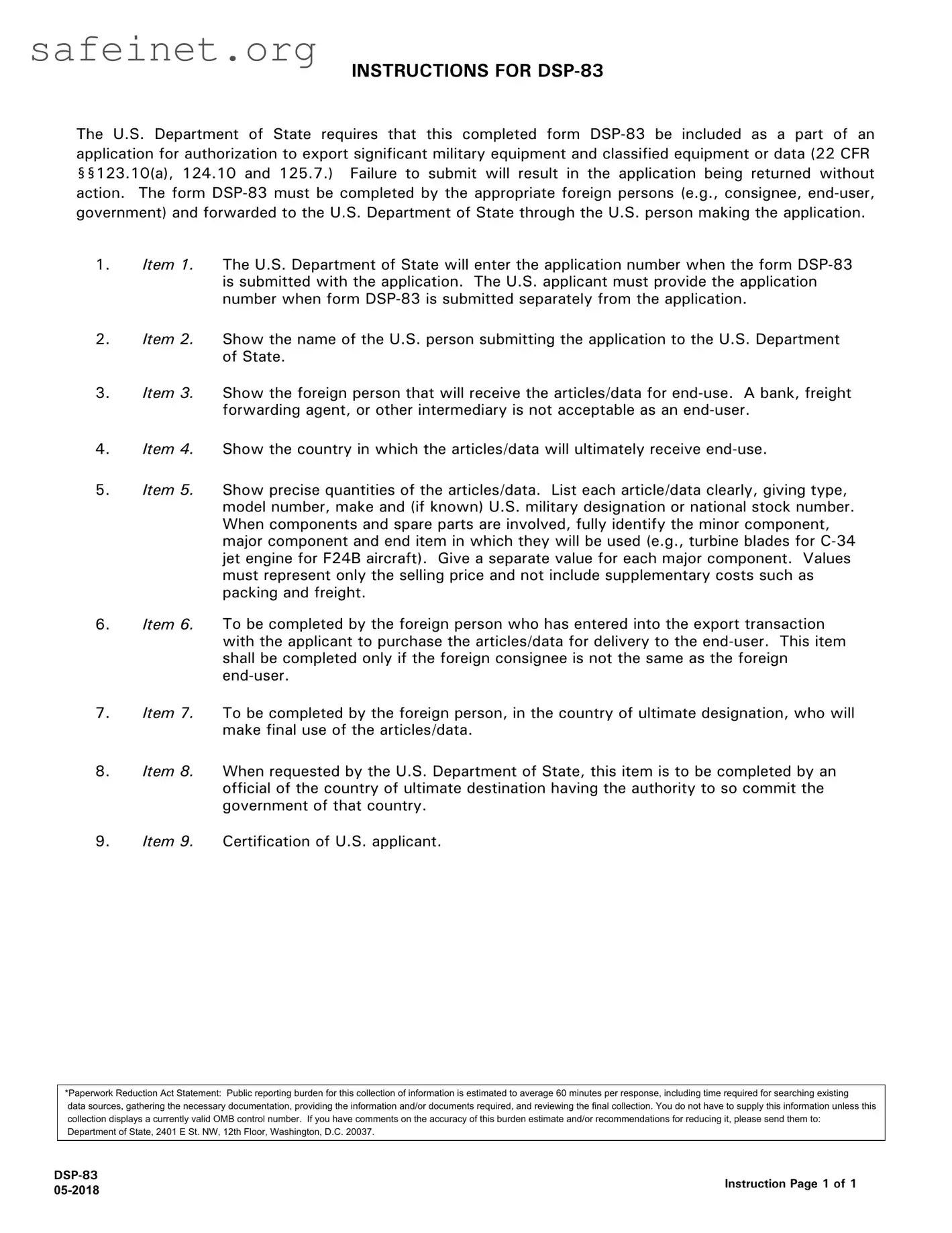What is the purpose of the DSP-83 form?
The DSP-83 form is a requirement set by the U.S. Department of State for applications seeking authorization to export significant military equipment and classified data. The form ensures compliance with export regulations and must accompany the application; failing to include it will result in the application being returned without any review.
Who needs to complete the DSP-83 form?
This form must be completed by appropriate foreign persons involved in the export transaction, including the consignee, end-user, or government entity. Submitting the form allows the U.S. Department of State to verify that all parties understand their responsibilities under U.S. export regulations.
What information is required in the DSP-83 form?
The form collects essential data, including the application number, the U.S. applicant's name, details about the foreign end-user, the country of ultimate destination, a description of the articles/data being exported, and certifications by various parties involved in the transaction. Specific itemization of articles with models, quantities, and values is critical.
What happens if the DSP-83 is not submitted with the application?
If the DSP-83 form is not submitted alongside the export application, the U.S. Department of State will return the application without taking any action. This underscores the importance of completing this form accurately and thoroughly to avoid unnecessary delays.
Can a freight forwarder be listed as an end-user?
No, a freight forwarder or any intermediary cannot be listed as the end-user on the DSP-83 form. The form specifically requires the actual foreign person who will receive the equipment or data for end-use to be identified. This ensures transparency and accountability in the export process.
What details must be included regarding the articles/data?
When listing articles or data on the form, it is necessary to include precise quantities, descriptions, type, model numbers, and associated values. If components or spare parts are involved, it's important to detail how they relate to the major components or end items in which they will be utilized. Each item must be clearly identified to prevent any ambiguity.
Who completes item 6 of the DSP-83 form?
Item 6 is to be completed by the foreign person who has entered into the export transaction to purchase the articles or data for delivery to the identified end-user. This item should only be filled out if the foreign consignee differs from the end-user.
What is the role of the certification by the foreign government?
The certification by the foreign government confirms that they will not permit the re-export, resale, or other disposal of the articles or data without prior written approval from the U.S. Government. It also provides assurances on the use of the items in accordance with specified agreements or treaties to ensure compliance with defense regulations.
What is the estimated burden of completing the DSP-83 form?
The estimated burden for completing the DSP-83 form is around 60 minutes on average. This timeframe includes gathering information, completing the documentation, and reviewing everything before submission. It is important to provide only the necessary information, as this can streamline the process significantly.


